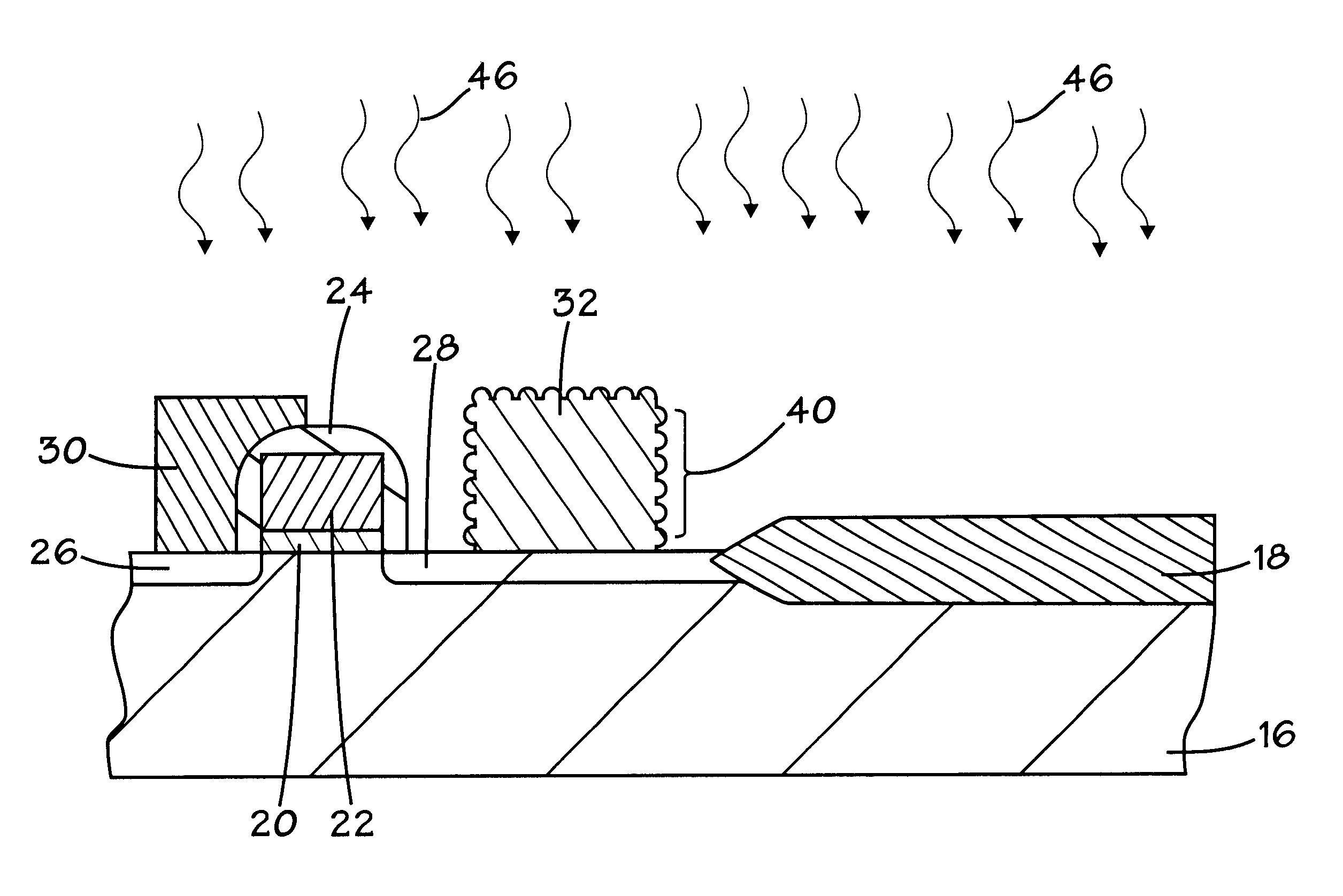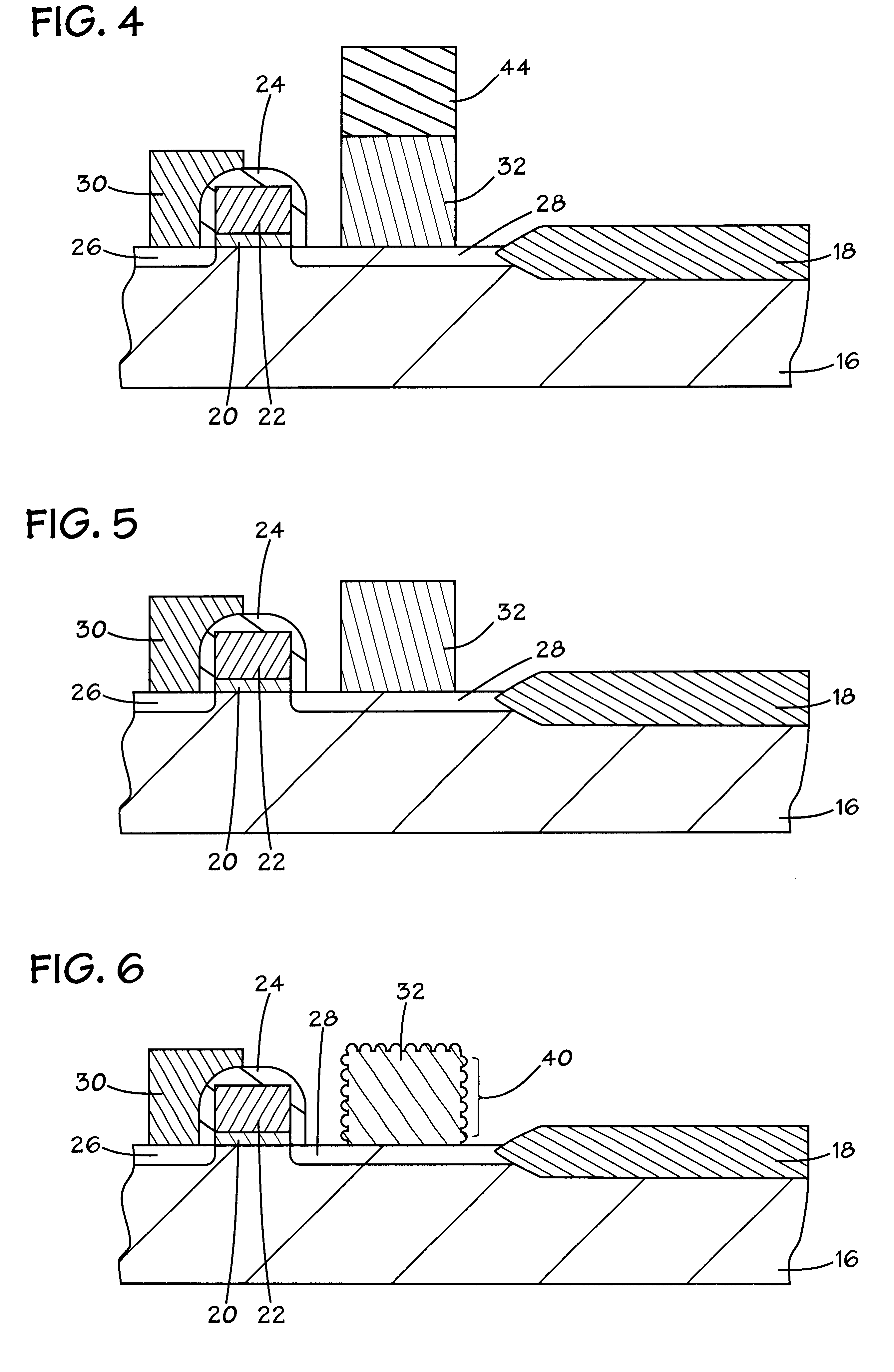Methods of fabricating a memory device
a memory device and memory technology, applied in the field of semiconductor processing, can solve the problems of reducing the available wafer area of devices, unable to maintain or even increase the capacitance of devices while minimum geometries continue to shrink, and unable to grow hsg with sufficient surface area
- Summary
- Abstract
- Description
- Claims
- Application Information
AI Technical Summary
Problems solved by technology
Method used
Image
Examples
Embodiment Construction
In the drawings described below, reference numerals are generally repeated where identical elements appear in more than one figure. FIG. 1 is a simplified cross-sectional view of an exemplary embodiment of a memory cell 10 that includes an access transistor 12 and a capacitor 14 formed on semiconductor substrate 16. The memory cell 10 is electrically isolated laterally by field oxide regions, one of which is shown and designated 18 for simplicity of illustration. The substrate 16 may be composed of n-type silicon, p-type silicon, silicon-on-insulator or other suitable substrate materials. The access transistor 12 includes a gate dielectric layer 20 formed on the substrate 16, a gate electrode 22 positioned on the gate dielectric layer 20 and a blanket insulating film 24 covering the gate dielectric layer 20 and the gate electrode 22. Source / drain regions 26 and 28 are formed in the substrate. A bit line 30 is positioned in contact with the source / drain region 26.
The storage capacito...
PUM
| Property | Measurement | Unit |
|---|---|---|
| temperature | aaaaa | aaaaa |
| thickness | aaaaa | aaaaa |
| pressure | aaaaa | aaaaa |
Abstract
Description
Claims
Application Information
 Login to View More
Login to View More - R&D
- Intellectual Property
- Life Sciences
- Materials
- Tech Scout
- Unparalleled Data Quality
- Higher Quality Content
- 60% Fewer Hallucinations
Browse by: Latest US Patents, China's latest patents, Technical Efficacy Thesaurus, Application Domain, Technology Topic, Popular Technical Reports.
© 2025 PatSnap. All rights reserved.Legal|Privacy policy|Modern Slavery Act Transparency Statement|Sitemap|About US| Contact US: help@patsnap.com



